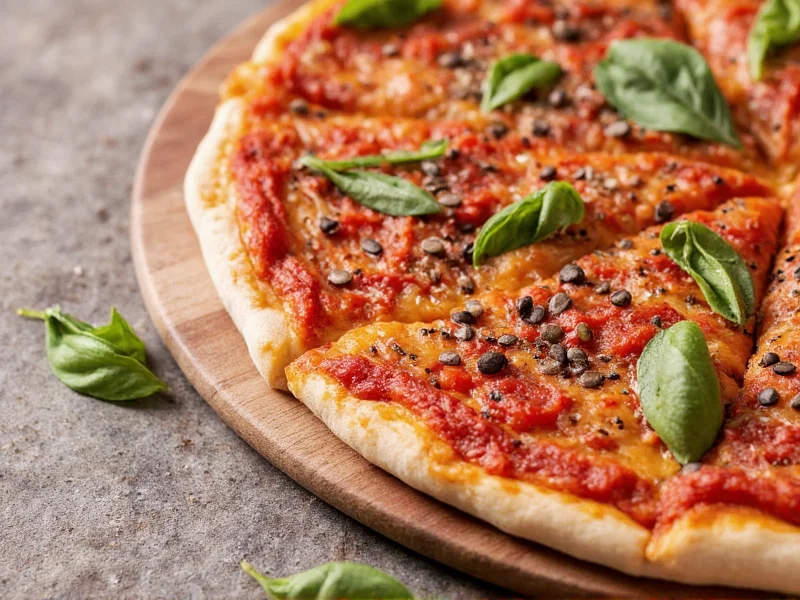Pepper flakes transform ordinary pizza into a flavor experience, but not all varieties work equally well. Understanding the nuances between different chili flakes helps you elevate your pizza game without overwhelming the delicate balance of flavors that makes pizza so beloved worldwide.
Types of Pepper Flakes for Pizza Perfection
When selecting pepper flakes for pizza, consider both heat level and flavor complexity. The right choice enhances rather than dominates your pizza's profile.
| Pepper Flake Variety | Heat Level (Scoville) | Flavor Profile | Best Pizza Pairings |
|---|---|---|---|
| Calabrian Chili Flakes | 15,000-30,000 | Fruity, slightly smoky, complex | Seafood pizza, margherita, white pizza |
| Traditional Red Pepper Flakes | 30,000-50,000 | Sharp, straightforward heat | Pepperoni pizza, meat lovers, classic red sauce pies |
| Aleppo Pepper Flakes | 10,000-15,000 | Earthy, slightly tangy, moderate heat | Veggie pizza, Mediterranean-inspired pies |
| Urfa Biber | 1,000-5,000 | Smoky, raisin-like, subtle heat | Prosciutto pizza, fig and goat cheese pies |
When to Apply Pepper Flakes: Timing Matters
The timing of pepper flake application significantly impacts flavor development. Most professional pizzaiolos recommend adding pepper flakes after baking for several reasons:
- Preserved volatile compounds - Heat during baking causes many aromatic compounds in chili peppers to evaporate, diminishing complex flavors
- Controlled heat distribution - Post-baking application ensures even heat distribution rather than concentrated hot spots
- Visual appeal - Bright red flakes create attractive contrast against melted cheese
For those who prefer integrated heat throughout the pizza, consider adding half your flakes before baking and the remainder after. This technique provides both infused heat and fresh flavor.
How Much Pepper Flakes to Use on Pizza
Portion control prevents overwhelming your pizza. The ideal amount depends on several factors:
- Pizza size - For a standard 12-14 inch pizza, 1-2 teaspoons total provides balanced heat
- Heat tolerance - Mild preference: 1/4 tsp per slice; Medium: 1/2 tsp per slice; Hot: 3/4 tsp per slice
- Topping combinations - Reduce amount when pairing with spicy meats like pepperoni or spicy sausage
Professional chefs recommend starting with less than you think you need—you can always add more, but you can't remove excess heat once applied. Remember that cheese and other toppings will mellow the perceived heat level.
Pairing Pepper Flakes with Pizza Toppings
Thoughtful pairing creates harmony rather than competition on your pizza. Consider these professional recommendations for best pepper flakes for homemade pizza combinations:
- Meat lovers - Traditional red pepper flakes complement the saltiness of cured meats without overpowering them
- Vegetarian options - Aleppo pepper's earthy notes enhance roasted vegetables and mushroom pizzas
- Seafood pizzas - Calabrian chili's fruity complexity pairs beautifully with shrimp or clams
- Cheese-focused pies - Mild Urfa biber won't compete with delicate cheese flavors
For pepper flakes pizza topping techniques, try creating a flavor gradient—more flakes on one side for those who prefer heat, less on the other for milder palates. This approach accommodates different preferences on a single pizza.
Creating Your Own Custom Pepper Flake Blend
Many pizzerias use proprietary blends to create signature heat profiles. You can craft your own homemade pepper flakes for pizza with these simple ratios:
- Classic Italian Blend: 3 parts red pepper flakes, 1 part Calabrian, 1/2 part garlic powder
- Mediterranean Blend: 2 parts Aleppo, 1 part Urfa biber, 1/2 part dried oregano
- Spicy Arrabbiata Style: 2 parts red pepper flakes, 1 part Calabrian, 1 part dried basil
Store your custom blend in an airtight container away from light and heat. Properly stored, homemade pepper flake blends maintain peak flavor for 4-6 months. For best storage practices for pepper flakes, keep them in dark glass containers rather than plastic, which can absorb odors.
Common Pepper Flake Mistakes to Avoid
Even experienced pizza makers sometimes make these errors with pepper flakes on pizza:
- Using stale flakes - Old pepper flakes lose volatile oils, resulting in flat, one-dimensional heat
- Over-application - More isn't better; excess flakes create bitter notes rather than pleasant heat
- Ignoring regional pairings - Traditional Neapolitan pizza rarely includes pepper flakes, while New York style often does
- Mixing with wet ingredients - Adding flakes to sauce before baking causes uneven distribution and diminished flavor
For optimal results with pepper flakes for different pizza styles, consider the pizza's origin and traditional preparation methods. Authentic Neapolitan pizza typically doesn't include pepper flakes, while Chicago deep-dish or New York style often benefits from a post-bake sprinkle.
Quality Indicators for Pepper Flakes
Not all pepper flakes deliver the same quality experience. When selecting best pepper flakes for pizza delivery or home use, look for these quality markers:
- Bright color - Vibrant red indicates freshness; dull, brownish flakes suggest age
- Consistent particle size - Uniform flakes distribute heat evenly
- Aromatic intensity - Fresh flakes should have a noticeable scent when opened
- Origin information - Reputable brands specify pepper variety and growing region
For pepper flakes pizza restaurant quality, many establishments use higher-grade flakes than what's commonly available in supermarkets. Consider specialty food stores or reputable online retailers for premium options that make a noticeable difference.











 浙公网安备
33010002000092号
浙公网安备
33010002000092号 浙B2-20120091-4
浙B2-20120091-4